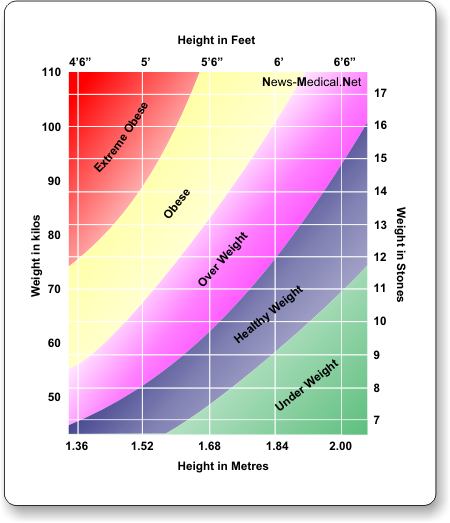Aug 3 2005
Obese people are less likely to receive preventive services such as mammograms, Pap smears and flu shots from health care providers, according to an analysis of health care data by Duke University Medical Center researchers.

The Duke study showed that, for a sample of white middle-aged women, as body mass index (BMI) went up, the odds of receiving mammograms and Pap smears went down. BMI is a measurement of body fatness based on weight adjusted for height. In data gathered in 2000, a white woman of normal weight was more than 50 percent more likely to receive a mammogram than a severely obese white woman (BMI greater than 40), the study showed.
The researchers found a similar inverse correlation between obesity and flu shots among elderly white women and men. However, they found no significant association between obesity and all three preventive services among black study participants.
"Despite knowing that obese women have a higher risk of breast and cervical cancer, and the obese elderly have a higher risk of complications from flu, obese people are less likely to receive clinical preventive services," said Truls Ostbye, M.D., Ph.D., lead study author and a professor in Duke's department of community and family medicine.
Based on their analyses, Ostbye and his co-authors found that income, education and access to health care were not important reasons for the discrepancies in care. The researchers suggest that significant causes may include social stigma, avoidance of health care by patients and bias by health care providers.
The results of the Duke study were published in the September 2005 issue of the American Journal of Public Health. The study was funded by the National Institute on Aging and the National Institute of Diabetes and Digestive and Kidney Diseases, both part of the National Institutes of Health.
The Duke team examined data from the Health and Retirement Study (HRS) and its companion, the Asset and Health Dynamics Among the Oldest Old (AHEAD) study. The studies began collecting information in 1993 to determine how retirement impacts the health and wealth of U.S. men and women. The studies are funded by the National Institute of Aging. In the HRS, 12,652 participants aged 50 to 61 in 1992 have been interviewed periodically about their health behaviors, disease, disability and medical care usage. The AHEAD study, which collects similar data, includes 8,124 seniors aged 70 years and older.
Ostbye and his co-authors examined data on mammograms, Pap smears and influenza vaccinations because these preventive services have been shown to be effective in preventing serious illness. The U.S. government has also placed a high priority on these health care services in Healthy People 2010, which identifies the nation's most significant health concerns and formulates action plans to address these concerns. Healthy People 2010's goals include mammograms for 70 percent of middle-aged women every two years and Pap smears for 90 percent of middle-aged women every three years. Also, 80 percent of the elderly should be vaccinated against influenza annually, according to the goals.
The Duke analysis of the data showed that while the overall number of tests provided to study participants increased from 1995/1996 to 2000 – the years included in the study – the disparities between normal weight and obese people remained constant, Ostbye said.
In 2000, more than 78 percent of women with a normal BMI (18.5-24.9) received mammograms. Only 71 percent of women with a BMI above 40, which is "Class III" or severe obesity, received mammograms.
The difference between study participants was greater for Pap smears. In 2000, 73 percent of women with normal weight BMI received Pap smears, compared to less than 54 percent of women with a BMI greater than 40.
The researchers also found a significant decrease in the proportion of study participants who received flu shots as their body mass increased. More than 78 percent of men and women with a normal BMI received flu shots in 2000, compared to only 57 percent of people with a BMI greater than 40 received flu shots, the researchers found.